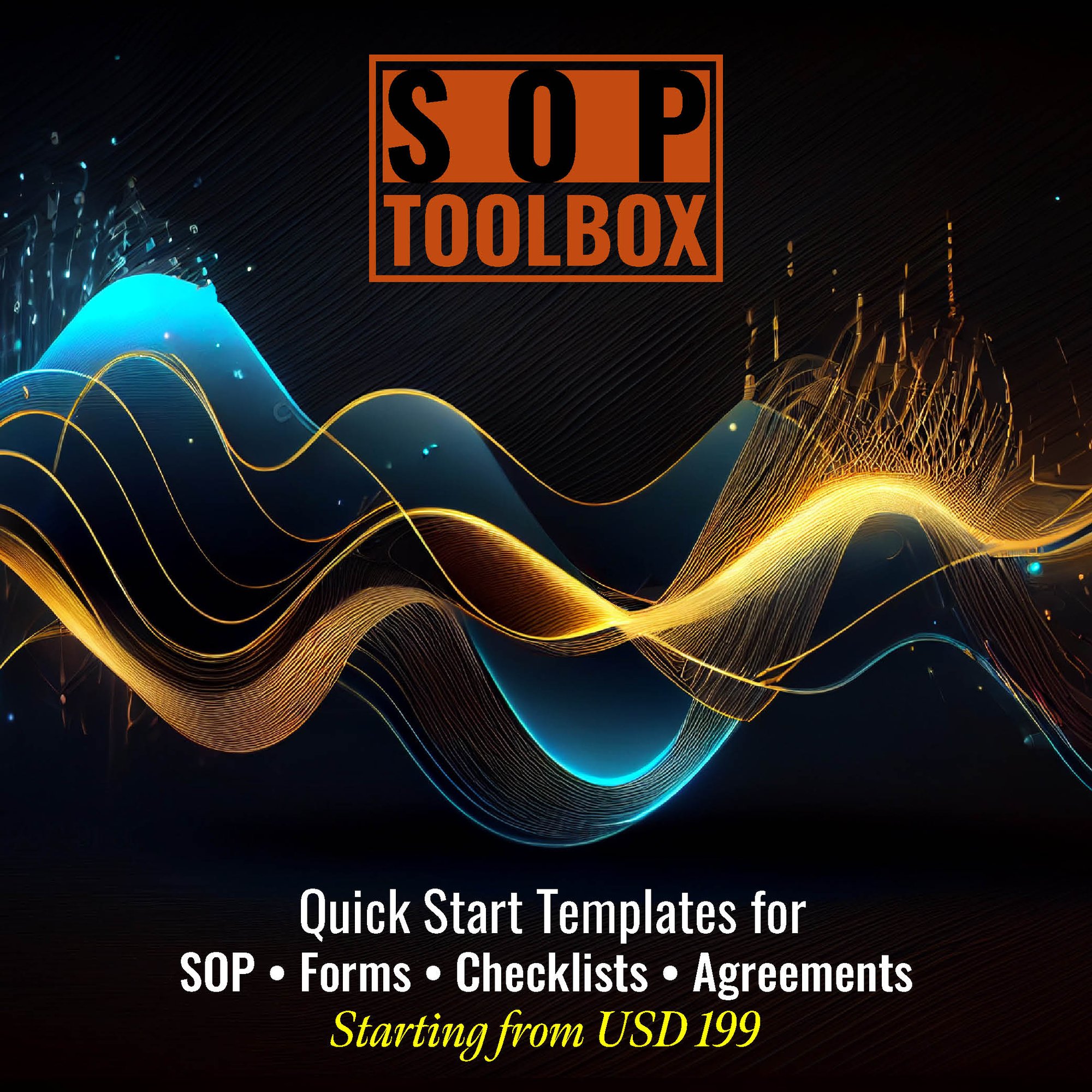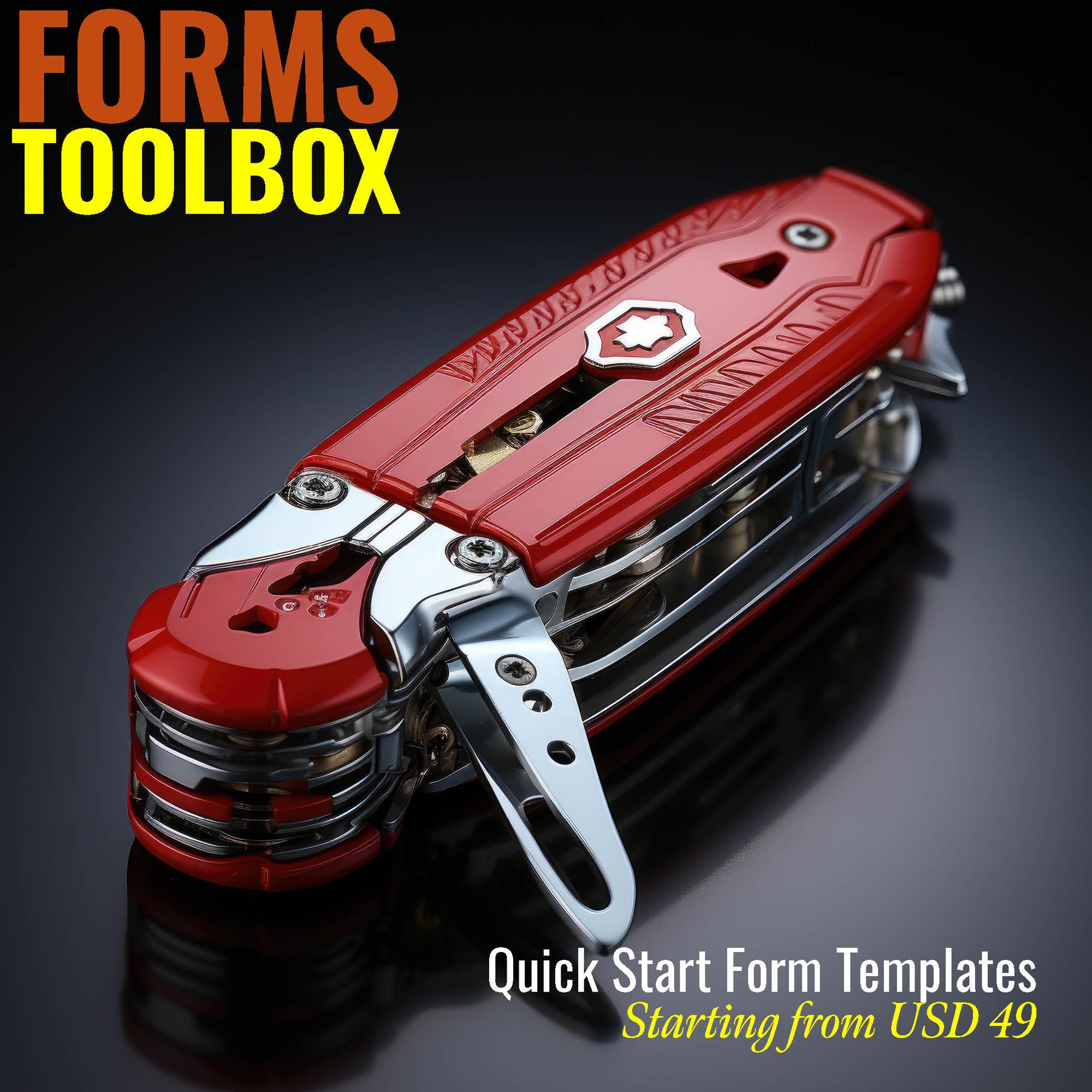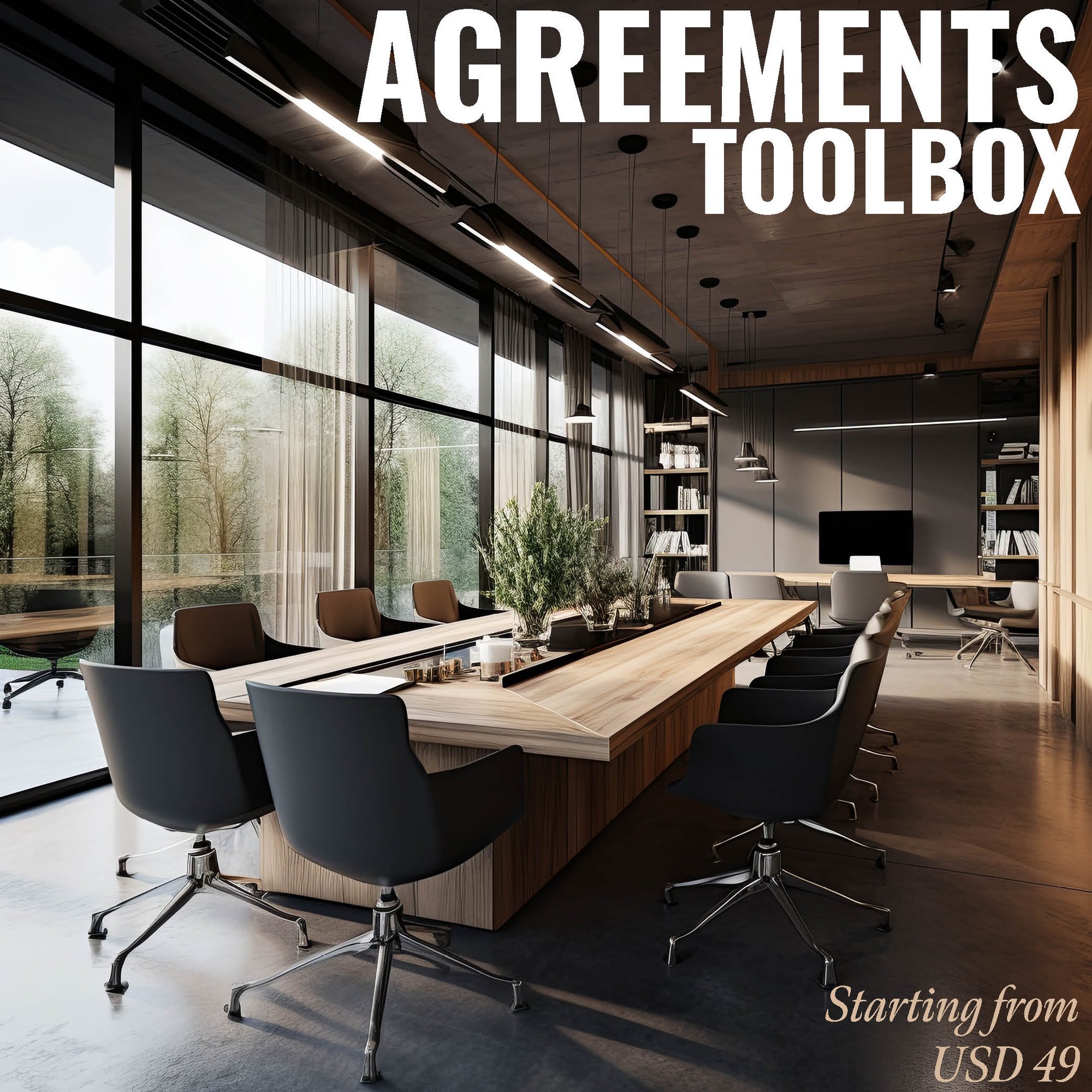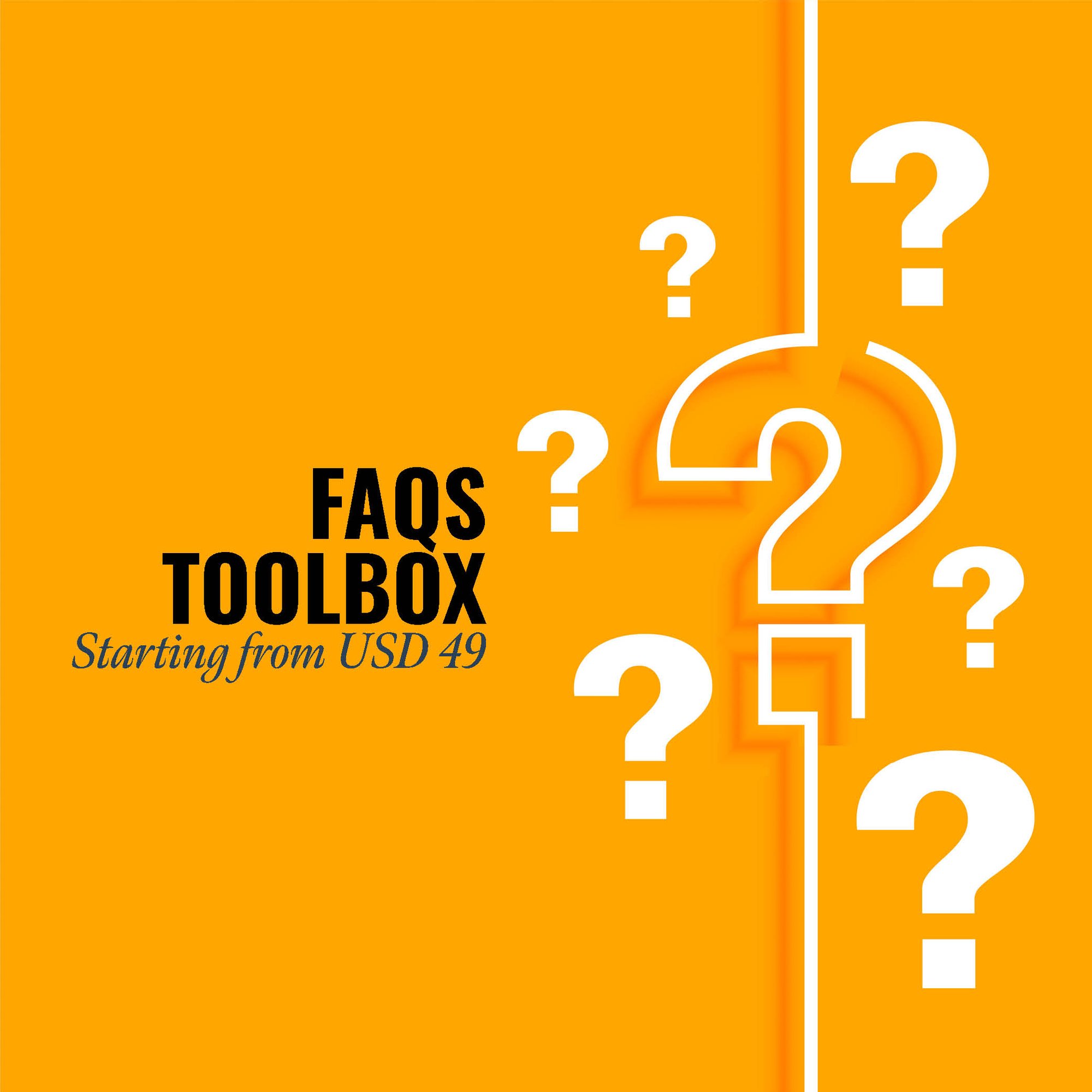An SOP (Standard Operating Procedure) Manual for Toy and Hobby Goods and Supplies Merchant Wholesalers holds numerous advantages in the wholesale industry. Firstly, it establishes standardized procedures for inventory management, order processing, and quality control, ensuring consistency and reliability in distributing toys and hobby goods. Secondly, the manual becomes a critical training resource, facilitating onboarding processes and promoting adherence to industry best practices among staff. Thirdly, the SOP Manual contributes to risk management by outlining safety measures, reducing errors, and ensuring compliance with industry regulations. Additionally, it supports operational efficiency, streamlining workflows, and optimizing resource utilization. This manual enhances customer satisfaction by ensuring timely and accurate order fulfillment. Overall, the good points lie in fostering professionalism, adherence to standards, and the overall success of toy and hobby goods merchant wholesalers in meeting market demands and maintaining a competitive edge.
CLICK HERE to download the List of SOPs Document in PDF format. Please share this document with your clients, colleagues and senior officers.
Top 50 Standard Operating Procedures (SOPs) for Toy and Hobby Goods and Supplies Merchant Wholesalers
SOP-016-001: Standard Operating Procedure for Order Processing
SOP-016-002: Standard Operating Procedure for Inventory Management
SOP-016-003: Standard Operating Procedure for Warehouse Safety
SOP-016-004: Standard Operating Procedure for Quality Control
SOP-016-005: Standard Operating Procedure for Shipping and Logistics
SOP-016-006: Standard Operating Procedure for Customer Returns
SOP-016-007: Standard Operating Procedure for Supplier Management
SOP-016-008: Standard Operating Procedure for Product Information
SOP-016-009: Standard Operating Procedure for Customer Service
SOP-016-010: Standard Operating Procedure for Sales and Marketing

SOP-016-011: Standard Operating Procedure for Employee Training
SOP-016-012: Standard Operating Procedure for IT and Systems
SOP-016-013: Standard Operating Procedure for Financial Procedures
SOP-016-014: Standard Operating Procedure for Regulatory Compliance
SOP-016-015: Standard Operating Procedure for social media and Online Presence
SOP-016-016: Standard Operating Procedure for Internal Communication
SOP-016-017: Standard Operating Procedure for Employee Health and Safety
SOP-016-018: Standard Operating Procedure for Technology Maintenance
SOP-016-019: Standard Operating Procedure for Conference and Event Participation
SOP-016-020: Standard Operating Procedure for Community Engagement
SOP-016-021: Standard Operating Procedure for Product Launch
SOP-016-022: Standard Operating Procedure for Bulk Order Processing
SOP-016-023: Standard Operating Procedure for Drop shipping Procedures
SOP-016-024: Standard Operating Procedure for Vendor Compliance
SOP-016-025: Standard Operating Procedure for Customer Loyalty Programs
SOP-016-026: Standard Operating Procedure for Product Packaging Standards
SOP-016-027: Standard Operating Procedure for Seasonal Inventory Management
SOP-016-028: Standard Operating Procedure for Cross-Selling and Upselling
SOP-016-029: Standard Operating Procedure for Competitor Analysis
SOP-016-030: Standard Operating Procedure for data Security and Privacy

SOP-016-031: Standard Operating Procedure for Employee Recognition Programs
SOP-016-032: Standard Operating Procedure for Sustainability Initiatives
SOP-016-033: Standard Operating Procedure for Product Life Cycle Management
SOP-016-034: Standard Operating Procedure for Forecasting and Demand Planning
SOP-016-035: Standard Operating Procedure for Employee Attendance and Time Tracking
SOP-016-036: Standard Operating Procedure for Digital Marketing Strategies
SOP-016-037: Standard Operating Procedure for Global Supply Chain Management
SOP-016-038: Standard Operating Procedure for Continuous Improvement Initiatives
SOP-016-039: Standard Operating Procedure for Counterfeit Product Prevention
SOP-016-040: Standard Operating Procedure for Document Control Procedures
SOP-016-042: Standard Operating Procedure for Gift Card Management
SOP-016-043: Standard Operating Procedure for Tariffs and Trade Compliance
SOP-016-044: Standard Operating Procedure for Market Research and Trend Analysis
SOP-016-045: Standard Operating Procedure for Customer Feedback Management
SOP-016-046: Standard Operating Procedure for Vendor Negotiation and Contracts
SOP-016-047: Standard Operating Procedure for Internal Audits
SOP-016-048: Standard Operating Procedure for E-commerce Integration
SOP-016-049: Standard Operating Procedure for Product Liability Procedures
SOP-016-050: Standard Operating Procedure for Employee Code of Conduct
SOP ToolBox: If you are reading these lines, I am sure you are looking for Standard Operating Procedure guidelines or SOPs itself. In both the cases, searching in internet will not be yielding any great help. Because no company shares their SOP Development Process and certainly don’t share their SOP Documents. The best way to develop an SOP is creating one for yourself. At Fhyzics, we write SOPs day-in and day-out for companies across the globe including some of the Fortune 500 organisations. Our charge ranges from USD 5000 to USD 50000 depending upon the number of processes to be covered. Certainly, this is not affordable to small and mid-size organisations. Hence, we decided to create this SOP ToolBox to disseminate our 8-Step SOP Development Life-Cycle and best practices at an unbelievably low price.
I always say, writing an SOP is somewhere between art and science. So far you may be clueless on where to start and how to progress on an SOP? This will not be the case after you diligently go through this SOP ToolBox. We have summarised all our secrets here to get you started and to deliver a stunning SOP to your management.
1. Standard Operating Procedures (SOP) Manual for Accounts Department
2. Standard Operating Procedures (SOP) Manual for Finance Department
3. Standard Operating Procedures (SOP) Manual for Customer Service
4. Standard Operating Procedures (SOP) Manual for CRM Department
5. Standard Operating Procedures (SOP) Manual for Credit Department
6. Standard Operating Procedures (SOP) Manual for Treasury Department
7. Standard Operating Procedures (SOP) Manual for Human Resources (HR) Department
8. Standard Operating Procedures (SOP) Manual for Training Department
9. Standard Operating Procedures (SOP) Manual for Learning & Development Department
10. Standard Operating Procedures (SOP) Manual for Administration Department
11. Standard Operating Procedures (SOP) Manual for Front Office
12. Standard Operating Procedures (SOP) Manual for House Keeping
13. Standard Operating Procedures (SOP) Manual for Safety Department
14. Standard Operating Procedures (SOP) Manual for Security Department
15. Standard Operating Procedures (SOP) Manual for Facilities Management Department
16. Standard Operating Procedures (SOP) Manual for Vigilance Department
17. Standard Operating Procedures (SOP) Manual for Legal Department
18. Standard Operating Procedures (SOP) Manual for Information Technology (IT) Department
19. Standard Operating Procedures (SOP) Manual for Sales & Marketing Department
20. Standard Operating Procedures (SOP) Manual for Design & Engineering
21. Standard Operating Procedures (SOP) Manual for Procurement Department
22. Standard Operating Procedures (SOP) Manual for Production
23. Standard Operating Procedures (SOP) Manual for SRM Department
24. Standard Operating Procedures (SOP) Manual for Supply Chain Department
25. Standard Operating Procedures (SOP) Manual for Warehouse
26. Standard Operating Procedures (SOP) Manual for New Product Development Department
27. Standard Operating Procedures (SOP) Manual for Research and Development
28. Standard Operating Procedures (SOP) Manual for Quality Department
29. Standard Operating Procedures (SOP) Manual for Calibration Department
30. Standard Operating Procedures (SOP) Manual for Maintenance Department
31. Standard Operating Procedures (SOP) Manual for Logistics Department
Wholesale distributors of toys experienced a shrinking customer base in the early 1990s, as national toy store chains and discount stores began to buy directly from manufacturers. Sales in the mid-1990s continued to grow, up by 20 percent from 1992 to $20 billion. However, since 1992 expenses have been rising faster than sales. While toy distributors were once the most important customers at toy fairs, Toys 'R' Us became the leading toy retailer in the mid-1990s and had the most purchasing clout with toy manufacturers, accounting for 20 percent of U.S. toy sales in 1996. Sydney Ladensohn Stern and Ted Schoenhaus, authors of Toyland: The High Stakes Game of the Toy Industry, wrote that toy manufacturers referred to the wholesale distributors as "dinosaurs because they used to be the toy company's most powerful customers, and today they are almost extinct." However, wholesale distributors of toys continue to supply smaller, independent toy stores and department stores, and still regarded their industry as playing a pivotal role in the toy marketplace.
-
Reeves International Inc
-
VTech Electronics North America, LLC
-
Mayfair Games Inc
-
Balloons Are Everywhere Inc
-
Great Planes Model Distributors Co
-
Notions Marketing Corp
-
Lakeshore Learning Store
-
Spin Master Inc
-
Aerial Bouquets
-
Discovery Toys Inc
-
Clichebles
-
Horizon Hobby
-
Nkok
-
Diversified Ceramics Corp
-
Linel
-
Military Model Distributors Inc
-
Funko Inc
-
Silly Strings Products
-
Colorbok Inc
-
Playmobil Inc
-
Aw Faber Castell USA Inc
-
Delphi Creativity Center
-
Hobby Products International
-
M and Y Trading Corp
-
Galaxy Fireworks Confetti King
-
Bostik Inc
-
R And R Games Inc
-
Zurla Sales
-
Dominion Fireworks Inc
-
Record A Hit
-
Shelton Fireworks
-
Add Fire Inc
-
Phantom Big Bear Fireworks
-
MacPherson's
-
Premium Balloon Accessories
-
Well Made Toy Manufacturing Corp
-
Imperial Toy Corp
-
Pyro City Fireworks Store
-
The Petting Zoo
-
Stevens International
-
Kemac
-
C Eaco
-
Jersey Jack Pinball
-
The Foland Group
-
Moto City Classics Inc
-
Yomax Inc
-
Rich Frog Industries
-
Playful Corp
-
Mosey
-
Dan Dee International, Ltd
-
Morpho Productions
-
Tex Cap Wholesale Toys
-
LSM Gaming
-
Childrens Heaven
-
Abel Creations
-
Cryptozoic Entertainment
-
Central Maine Pyrotechnics
-
Hi Rise Balloons Inc
-
Ballons Are Everywhere
-
Jamestown Music Amusmt
-
Laser One
-
Penn State Industries
-
Basco Inc
-
Wildtangent
-
Ciinow Inc
-
Special Reserve Games
-
Frontline Gaming
-
Monomi Park
-
Cbc Pac
-
Game Plus
-
Gamers Cell
-
Gamers International
-
Level 5 International America Inc
-
G33K
-
Playdom Boulder
-
Zenimax Online Studios
-
Gamerz Paradise
-
Doxell, LLC
-
Gaudzilla
-
Pink Gorilla, LLC
-
Super Smash Video Games, LLC
-
Futurepoly
-
Ton O Fun
-
USA Beepers
-
Dzd Holdings
-
Unico Enterprises
-
Concrete Software Inc
-
Get Your Game On
-
Gameplay
-
Game Gallery
-
M And M Video Games
-
A Gamers Nostalgia
-
Cdi
-
Jay Street Video Games
-
High View Sports Video
-
Electronics Boutique
-
Game Kingdom
-
Game Galaxy
-
Third Day Games
-
R And R Technologies, LLC
Factors affecting Toy and Hobby Goods and Supplies Merchant Wholesalers
- Value-added Services and the Role of the Distributor
Consolidation of toy manufacturers and retailers meant massive changes for the distribution network of the toy industry. Eliminating the added expense of distributor-ships, major toymakers were able to offer volume discounts to toy stores and other retailers of toys. Furthermore, toy store chains such as Toys 'R' Us established their own distribution centers from which to supply their stores. In 1995, the pressure on distributors increased as more manufacturers went to direct distribution of their products, an effort led by Marvel comic books and Citadel Miniatures. This second wave in the direct distributorship drive proved even more vexing for the wholesalers because the manufacturers involved introduced the licensing of retail outlets. These licensed dealers received delivery of new product releases before non-licensed dealers and wholesalers, which further tightened the market for distributors.
Consequently, toy and hobby wholesale distributors targeted smaller retail stores and chains, offering merchandise from the smaller manufacturers. They also expanded their industry to include the distribution of hobby and craft items. Distributors recognized that service was vital to their survival in a tough market.
William L. MacMillan, executive director of the Toy and Hobby Wholesalers Association in 1991, noted in a 1991 article in Playthings magazine that the distributor could still offer many unique services to both retailers and manufacturers. For instance, the distributor, having associations with thousands of products and retailers, was able to provide valuable information to toymakers and toy sellers. MacMillan suggested that the wholesaler could act as a consultant to new retailers, advising them about such issues as the proper quantities to keep in stock and the benefits of certain promotional techniques. Furthermore, MacMillan observed, the distributor could provide valuable services to manufacturers by offering information on how various products were selling in specific markets, providing advertising aid through distributor-sponsored promotions and in-store displays, and providing sales training to store personnel.
The distributors' volume buying power meant they could offer retailers lower prices than the manufacturer, and by maintaining fully stocked warehouses, distributors also helped save retailers and manufacturers inventory space. In addition, a computer network for ordering, sales, and inventory became perhaps the most important value-added service. Through such a network, distributors provided an efficient means of sharing information with both manufacturers and retail clients.
According to a survey of the entire wholesale distribution industry, consolidation of the distribution industry led to fewer but stronger competitors able to offer a wide range of services including volume discounts, improved financing options, and adoption of state-of-the-art warehouse technology.
Although consolidation of the retail toy industry forced many distributors out of business, those that remained were more efficient and were able to explore smaller manufacturers and retail accounts, including independent drug and specialty stores.
- Craft and Hobby Boom
The crafts and hobby industry experienced a renewed popularity in the early 1990s, probably due to a return to homemade gifts and decorations prompted by economic recession. A 1994 survey by the trade group Hobby Industries of America found that participation in crafts or hobbies had increased, with 81 percent of U.S. households participating in a particular craft or hobby, compared to 77 percent four years earlier.
- New Technology's Impact
Probably the most intriguing change in the toy industry was the birth of the Internet. Companies such as eToys, founded in 1996, gained considerably publicity during the 1999 Christmas season. eToys offered buyers the opportunity to shop at home for hard-to-find toys rather than braving crowded stores and frenzied shoppers. The company's sales in 1999 were $30 million, but that represented a 4,267 percent jump from the previous year. There are numerous concerns and challenges surrounding the concept of e-trade, but there is no question that as the technology improves, online toy shopping will become an important element of the sales structure.
- British Toy and Hobby Association (BTHA)
https://www.btha.co.uk/ - The Toy Association
https://www.toyassociation.org/
The SOP manual gives details about processes, factors, and challenges in the Toy and Hobby Goods and Supplies Merchant Wholesalers. Acknowledging changes in the marketplace, the Toy Wholesalers Association changed its name to the Toy and Hobby Wholesalers Association in 1989. Like wholesalers in other industries, toy and hobby wholesalers refocused their business to provide value-added services generally not offered by manufacturers. Even toy specialty retailers were not immune to a shifting market, however. By 1998, Toys 'R' Us had been surpassed by Wal-Mart as leading toy retailer. Wal-Mart commanded 17.4 percent of the market, while Toys 'R' Us dropped to 16.8 percent of the market.
Research By : Mohammed Ijas
Please click here to review the SOP Templates’ Terms & Conditions.
Keywords: sop, manual, policy, sop meaning, sop full form, standard operating procedure, full sop, user manual, sop is, user guide, instruction manual, owners manual, sample sop, operators manual, sop example,standard operating procedure examples, abbreviation sop, standard operating procedure sample, milk sop, sop document, sop process,m manual, operating procedures, operating process, sop meaning in hindi, standard procedure, sop standard operating procedure, sop top, sop writing, standard operating procedures manual, sop meaning in english, sample sop for mba, standard operating procedures examples in office, product manual, sample sop for ms, maintenance manual, sop security, sop in research, sop in business, whats sop, standard of operation, sop set, sop procedure, sop marketing,sop training, sop hotel, sop, sop meaning business, sop form, sba sop,sop software, help manual, sop it, army sop, company sop, sop sap, o m manual, standard operating procedure examples for small business, shop manual, sop manual, sop meaning in business, purpose of standard operating procedures, sop full meaning, standard operating procedure meaning, sop military, sop standard, sop meaning medical, hr sop, sop production, purpose of sop, sop management, warehouse sop, sales sop, sop pharma, sop manufacturing, sop creation, sop laboratory, ms sop, sop full form in hindi, sop front office, sop customer service, sop online, gmp sop, sop purchasing, sop pharmacy, sop safety, sop for project management,sample sop for australian student visa, sop meaning in tamil, sop system, best sop, sop up, sop in english, sop for mechanical engineering, sop for university,sop in malay, sop lab, sop for business analytics, sop model, sop in pharmacy, developing sops, standard operating procedure examples manufacturing, sop full form in retail,sop full form in medical, sop engineering, sop application, writing standard operating procedures, procurement sop, sop maintenance,standard operating procedure nhs, sop clinical trial, sop operations,sop in construction, operating procedures manual, standard operating procedure ppt, standard procedure meaning, sop ppt, a sop, sop document meaning, sop def, sop full form in safety, sop quality control, sop for college, sop quality, sop service, types of sop, sop for engineering management, sop document sample, benefit of sop, preparing sop, standard operating procedure in hindi, sop for visa, sop compliance, sop protocol, sop aviation, sop meaning in chat, standard operating process, sop meaning military, sop for business management, standard operating procedure software, sop list, sop medical, sop logistics, sop project, sop for it department, sop call center, standard work procedures, sba sop 50 10, sop meaning in logistics, standard operating procedure laboratory, test sop, sop sample for ms, drafting sop, sops meaning in tamil, sops meaning in telugu, sop automotive, standard operating system, sop cafe, sop slideshare, sop ap, sop bank, sop in retail, creating standard operating procedures, sop admin, document control sop, pharmaceutical sop,sop in pharmaceutical industry, statement of purpose harvard, sop examples for ms, quality assurance sop, sop in clinical research, nursing sop, sop for transportation, sop policies, sops are specific to a process, sop in hindi, standard operating procedure for warehouse picking, master sop, list of sop for pharma, pharmaceutical sop examples, types of standard operating procedures, retail sop, sample sop for ms in mechanical engineering, standard operating protocol,sop supply chain, system operating procedure, sop rules, example of sop in research, sop in food industry, sop for international business management, sop for hospitality management, sop for hr department, army sop example, sop standard operating, office sop, hr standard operating procedures, preventive maintenance sop, sop for purchase department, human resources sop, fire department sops, information technology sop, operating procedure example, administration sop,sop for retail store, indian sop, construction management sop, sop hotel front office, example sop document, standard and procedures,working sop, sop for maintenance department, sop hrd department,sop full form in hotel industry, sop full, sop for human resource management, laboratory sop examples, standard operating procedure for quality control, sop for ms in mechanical engineering, sop meaning army, security standard operating procedures, sop machine, sample sop for internship, sop for hotel management, sample sop for masters, qa sop, developing standard operating procedures, standard operating procedure document, product recall sop, marketing statement of purpose, it standard operating procedures, equipment sop, sop purpose example, sop shipping, sop for sales and marketing,converting pos to sop, workshop sop, standard operating procedure manufacturing, digital marketing standard operating procedures, following standard operating procedures, sop ki full form, sop for nursing procedures, an sop, purchase sop for manufacturing company, sop a, statement of purpose for mba marketing, full meaning of sop, sop for research internship, research sop sample,vendor qualification sop, sop purchasing and receiving, sop meaning in visa, sop for admission, standard operating procedure medical office, sop in industry, sop sales marketing, navy sop, project management standard operating procedures, sop it support, standard operating manual, security operating procedures, statement of purpose for international business, procurement standard operating procedures, communication sop, sop full form in pharma, minimum sop, sop health and safety, product sop, sop for marketing department, sop in medical terms, sales standard operating procedure, sop purchase order, department sop, customer service standard operating procedures, clinical sop, marketing standard operating procedure, sop standard operating procedure example, construction standard operating procedures, standard of operations procedures manual sample, sop for facility management, sop full form in education, standard operating procedure in food industry, visa sop,sop for business administration, company sop meaning, sop work, sop operating procedure, sop for summer internship in engineering sample, general administration sop, sop for administrative duties.
Our SOP Templates’ clients are from the following States and Countries:
Alabama, Alaska, Arizona, Arkansas, California, Colorado, Connecticut, Delaware, Florida, Georgia, Hawaii, Idaho, Illinois, Indiana, Iowa, Kansas, Kentucky, Louisiana, Maine, Maryland, Massachusetts, Michigan, Minnesota, Mississippi, Missouri, Montana, Nebraska, Nevada, New Hampshire, New Jersey, New Mexico, New York, North Carolina, North Dakota, Ohio, Oklahoma, Oregon, Pennsylvania, Rhode Island, South Carolina, South Dakota, Tennessee, Texas, Utah, Vermont, Virginia, Washington, West Virginia, Wisconsin, Wyoming.
Afghanistan, Albania, Algeria, Andorra, Angola, Antigua and Barbuda, Argentina, Armenia, Australia, Austria, Azerbaijan, Bahamas, Bahrain, Bangladesh, Barbados, Belarus, Belgium, Belize, Benin, Bhutan, Bolivia, Bosnia and Herzegovina, Botswana, Brazil, Brunei Darussalam, Bulgaria, Burkina Faso, Burundi, Cabo Verde, Cambodia, Cameroon, Canada, Central African Republic, Chad, Chile, China, Colombia, Comoros, Congo (Republic of the), Costa Rica, Croatia, Cuba, Cyprus, Czech Republic (Czechia), Democratic People’s Republic of Korea (North Korea), Democratic Republic of the Congo, Denmark, Djibouti, Dominica, Dominican Republic, Ecuador, Egypt, El Salvador, Equatorial Guinea, Eritrea, Estonia, Eswatini, Ethiopia, Fiji, Finland, France, Gabon, Gambia, Georgia, Germany, Ghana, Greece, Grenada, Guatemala, Guinea, Guinea-Bissau, Guyana, Haiti, Honduras, Hungary, Iceland, India, Indonesia, Iran, Iraq, Ireland, Israel, Italy, Jamaica, Japan, Jordan, Kazakhstan,Kenya, Kiribati, Kuwait, Kyrgyzstan, Lao People’s Democratic Republic (Laos), Latvia, Lebanon, Lesotho, Liberia, Libya, Liechtenstein, Lithuania, Luxembourg, Madagascar, Malawi, Malaysia, Maldives, Mali, Malta, Marshall Islands, Mauritania, Mauritius, Mexico, Micronesia (Federated States of), Moldova, Monaco, Mongolia, Montenegro, Morocco, Mozambique, Myanmar (Burma), Namibia, Nauru, Nepal, Netherlands, New Zealand, Nicaragua, Niger, Nigeria, North Macedonia (formerly Macedonia), Norway, Oman, Pakistan, Palau, Panama, Papua New Guinea, Paraguay, Peru, Philippines, Poland, Portugal, Qatar, Republic of Korea (South Korea), Republic of the Congo, Romania, Russian Federation (Russia), Rwanda, Saint Kitts and Nevis, Saint Lucia, Saint Vincent and the Grenadines, Samoa, San Marino, Sao Tome and Principe, Saudi Arabia, Senegal, Serbia, Seychelles, Sierra Leone, Singapore, Slovakia, Slovenia, Solomon Islands, Somalia, South Africa, South Sudan, Spain, Sri Lanka, Sudan, Suriname, Sweden, Switzerland, Syrian Arab Republic (Syria), Tajikistan, Thailand, Timor-Leste, Togo, Tonga, Trinidad and Tobago, Tunisia, Turkey, Turkmenistan, Tuvalu, Uganda, Ukraine, United Arab Emirates, United Kingdom of Great Britain and Northern Ireland, United Republic of Tanzania, United States of America, Uruguay, Uzbekistan, Vanuatu, Venezuela, Viet Nam, Yemen, Zambia, Zimbabwe.
Fhyzics supports organisations in developing the following documentations:
Standard Operating Procedures (SOPs), Work Instructions, Policies and Procedures, Process Flow Diagrams, Job Descriptions, Training Manuals, Employee Handbooks, Compliance Guidelines, Quality Assurance Manuals, Health and Safety Procedures, Risk Management Plans, Business Continuity Plans, Internal Audit Procedures, Incident Reporting Forms, Performance Management Guidelines, Change Management Procedures, Vendor Management Guidelines, Customer Service Protocols, IT Security Policies, IT Support Documentation, Disaster Recovery Plans, Operational Checklists, Data Management Policies, Confidentiality Agreements, Non-Disclosure Agreements, Employee Onboarding Procedures, Employee Exit Procedures, Performance Appraisal Forms, Employee Code of Conduct, Conflict Resolution Procedures, Product Development SOPs, Supply Chain Management Guidelines, Procurement Guidelines, Inventory Management SOPs, Shipping and Receiving Procedures, Production Scheduling SOPs, Maintenance Procedures, Equipment Calibration Documents, Environmental Compliance Documentation, Sustainability Policies, Customer Feedback Forms, Marketing Strategies, Advertising Guidelines, Brand Management Guidelines, Product Packaging SOPs, Laboratory Testing Procedures, Regulatory Compliance Documentation, Tax and Accounting Procedures, Contract Management Procedures, Legal Compliance Guidelines, Financial Reporting Procedures, Budgeting Procedures, Internal Control Procedures, Fraud Prevention Policies, Asset Management Guidelines, Purchase Order Procedures, Sales and Distribution Guidelines, Client Contracts, Customer Return Policies, Internal Communication Protocols, Vendor Evaluation Forms, Product Safety Standards, Workplace Health and Safety Standards, Public Relations Procedures, Social Media Management Guidelines, Crisis Management Plans, Employee Grievance Procedures, Privacy and Data Protection Policies, Digital Transformation Guidelines, Innovation Management Procedures, Continuous Improvement Guidelines, Strategic Planning Documents, Corporate Social Responsibility (CSR) Guidelines, Audit Trails and Records, Employee Training and Development Records, Succession Planning Documents, Talent Acquisition Procedures, Team Collaboration Protocols, Employee Benefit Plans, Workplace Diversity Guidelines, Time and Attendance Tracking, Payroll Procedures, Employee Leave Policies, Conflict of Interest Policy, Emergency Response Procedures, Environmental Impact Assessment Procedures, Transportation and Logistics Procedures, Inventory Control Forms, Warehouse Management Guidelines, Product Lifecycle Management SOPs, Customer Satisfaction Surveys, Third-Party Risk Assessment Guidelines, Technology Adoption Policies, Software Licensing Guidelines, Security Incident Response Procedures, Supply Chain Risk Management Policies, Product Recall Procedures, Food Safety Guidelines, Employee Wellness Programs, Workplace Ergonomics Guidelines.





.jpg?width=645&height=337&name=Standard%20Operating%20Procedure%20-%20SOP%20ToolBox%20(1).jpg)











